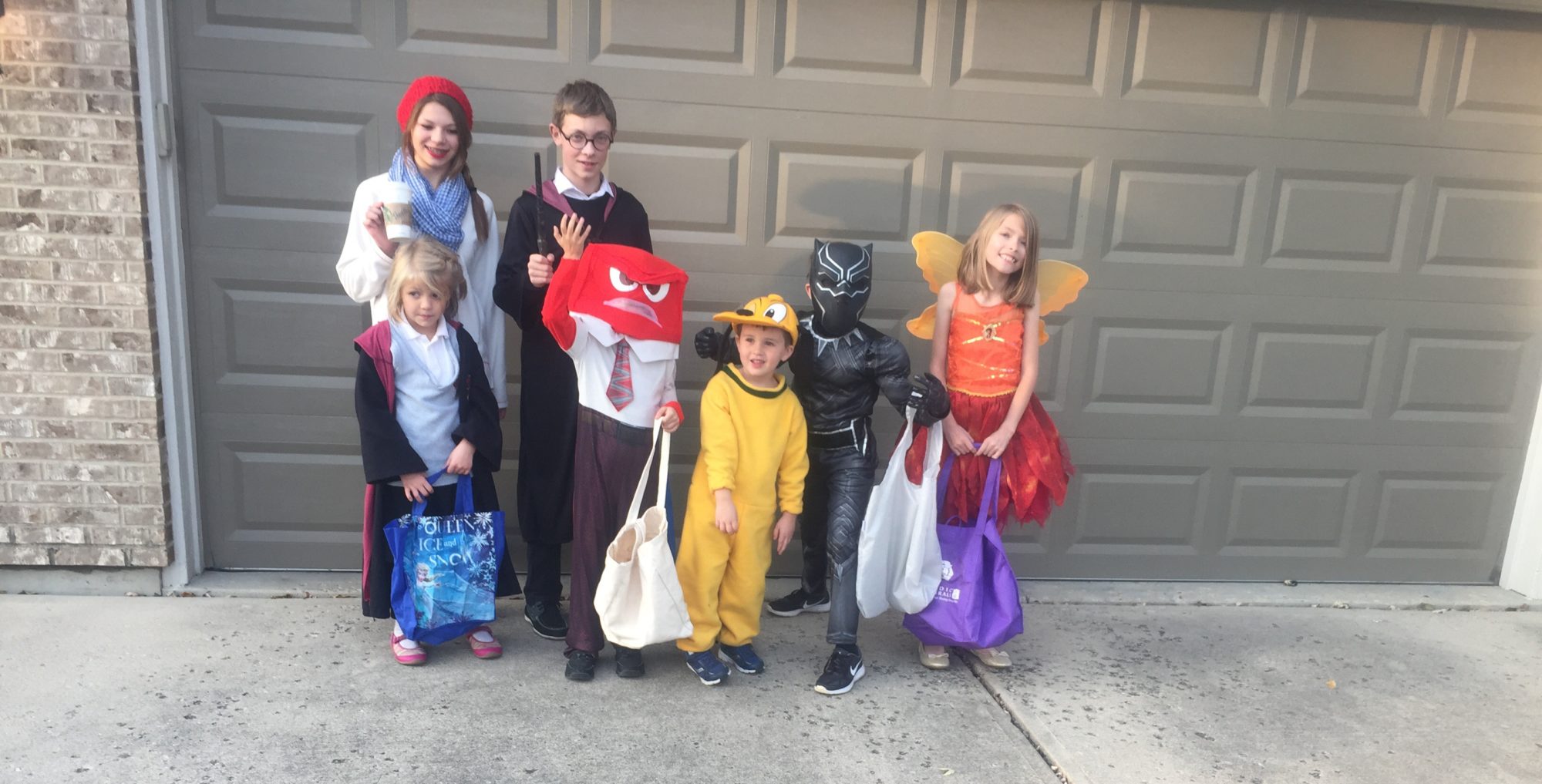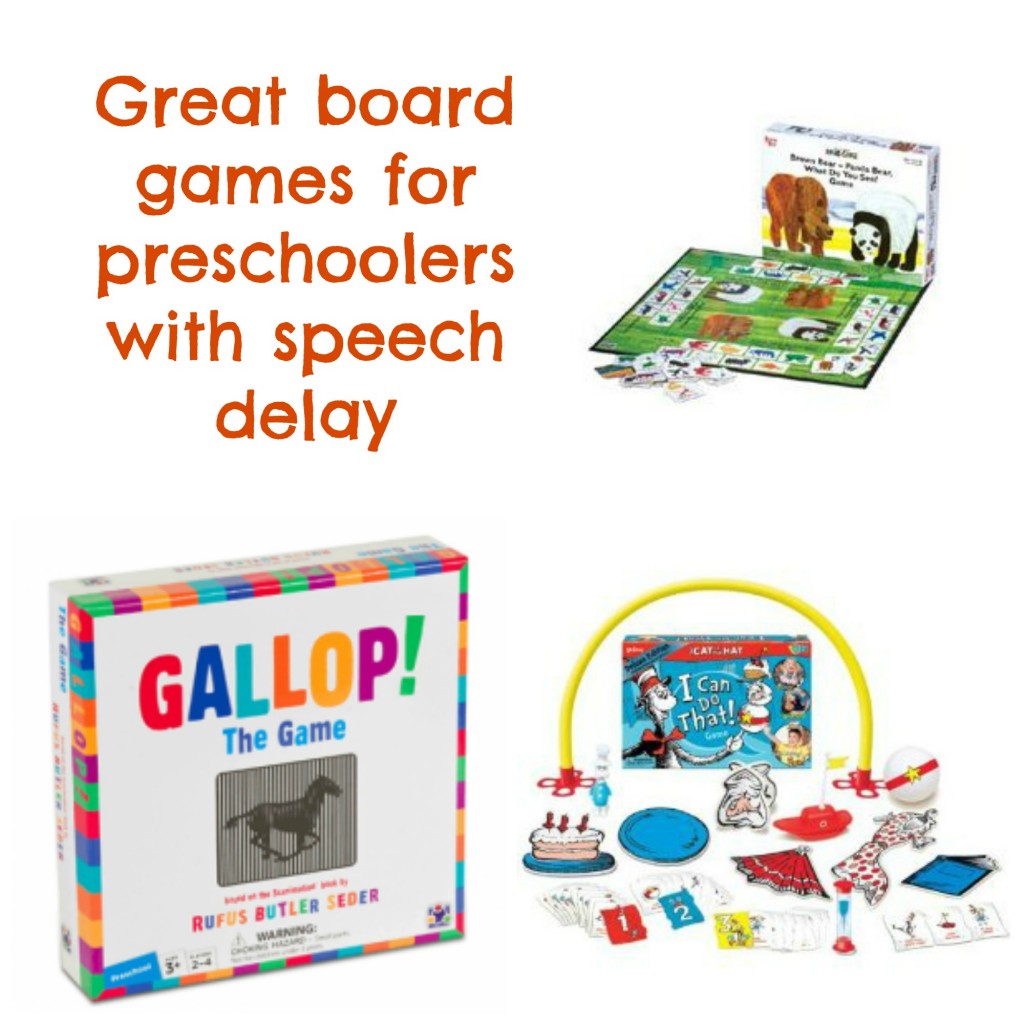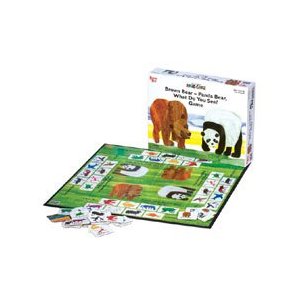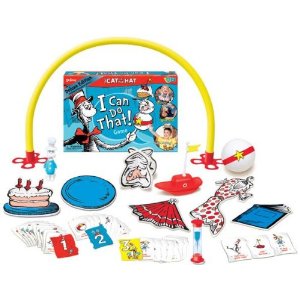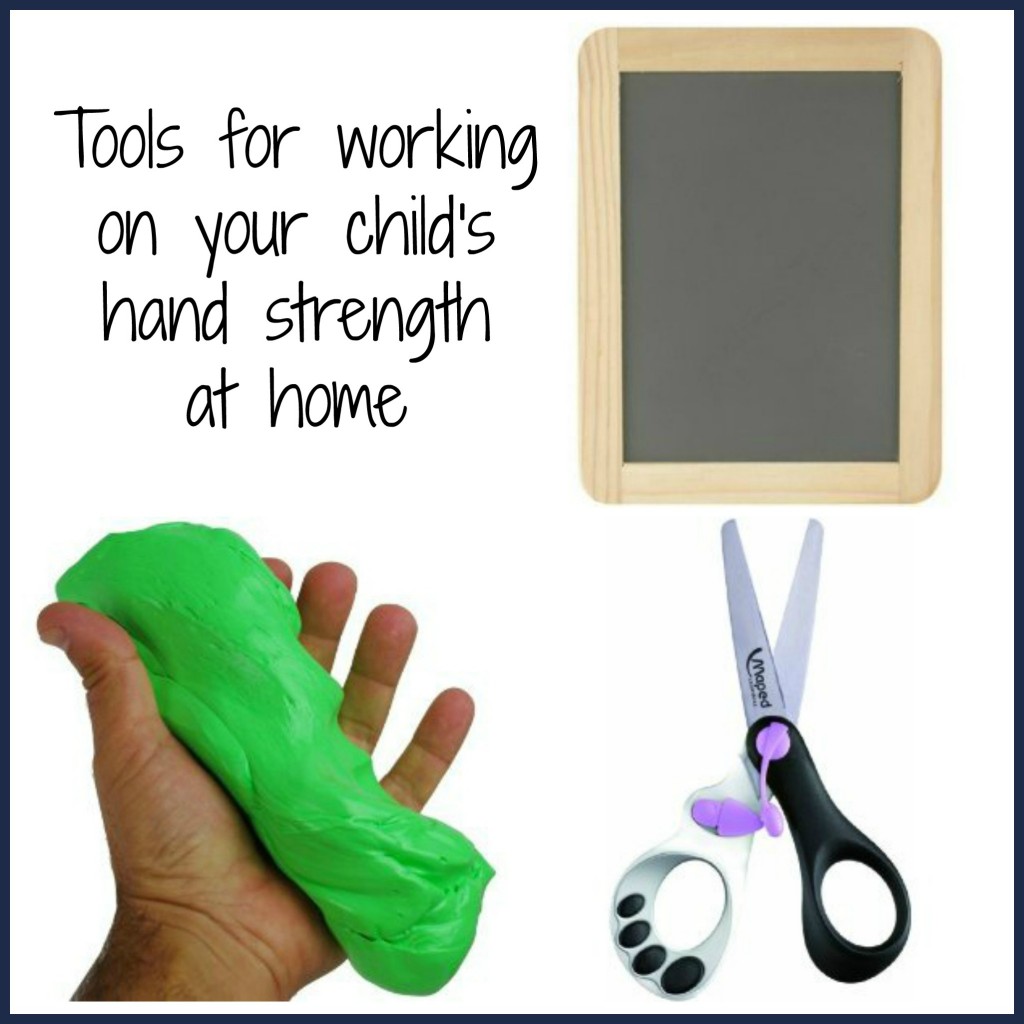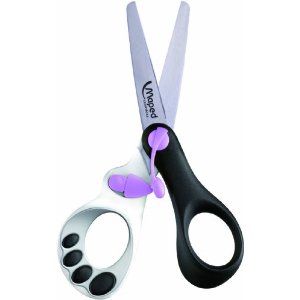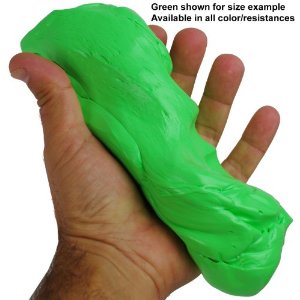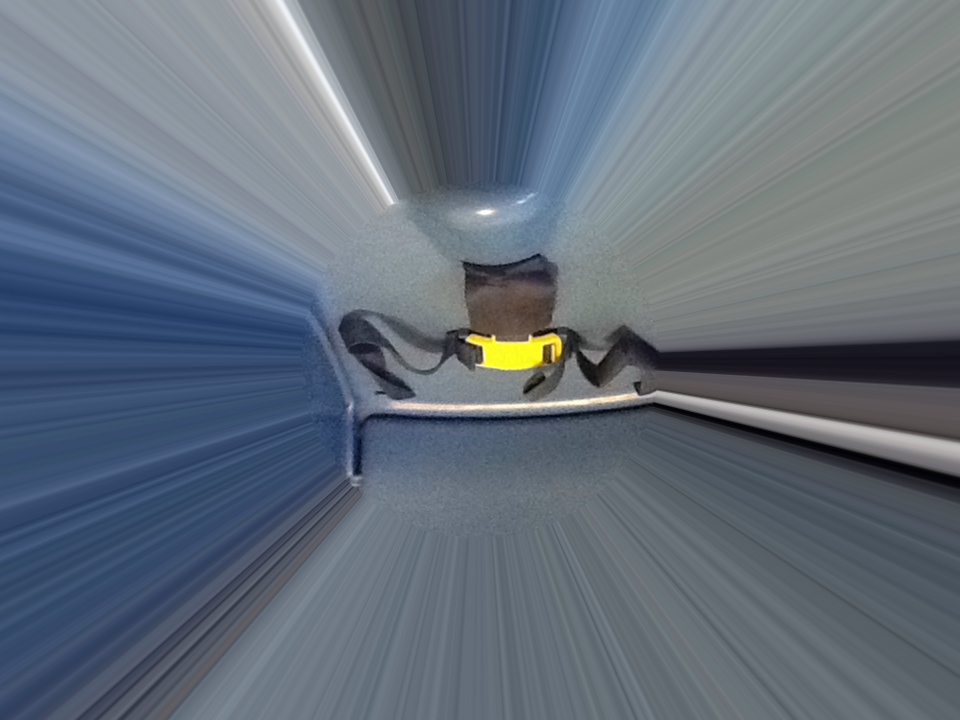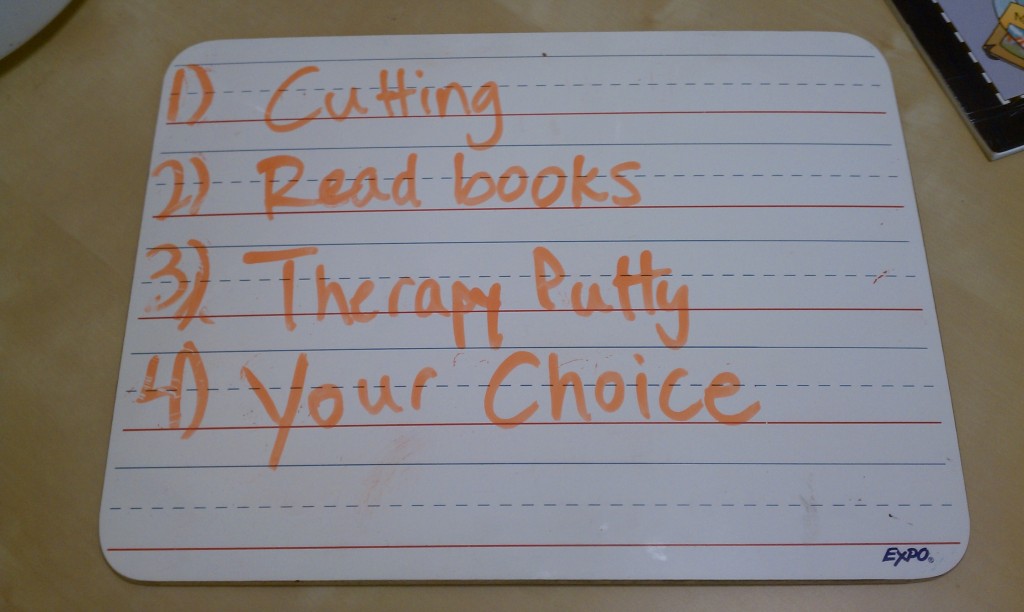Last November, I bought Sophie her first board game, in the hopes of helping her with her speech goals. Her speech language pathologist played games with her in therapy, and I found one at Target that was based on a book she enjoyed, and that was really easy to learn and play. With one play, Sophie was HOOKED. She became a board-game-a-holic, and learned lots of concepts like turn taking, sequencing, winning and losing. That first board game was “Brown-Bear Panda-Bear, what do you see?” by University Games, based on the books by Eric Carle.
It’s a great first game for any preschooler, but especially a speech delayed one. Here are some more great games for 3-4 year olds with speech issues (they are also great for “typically developing” kids!)
Gallop by Discovery Bay Games –
This is also based on a popular kids book. It’s really easy to play, it includes the book, and incorporates colors, numbers, and animals. It is very, very simple and basic, and would make a great first board game for any preschooler. Also, it can be played very quickly, so it’s a great one to learn on, the child won’t have time to get tired of it or distracted from it! Plus, the Scanimation book attached to the game is really cool and fun to look at.
The Cat in the Hat I can do that! by the Wonder Forge
My kids and I ADORE this game. It is just really fun to play! It allows your child to get physical while learning turn-taking and learning the important concept of following multi-step directions. It’s just a blast!
Curious George Discovery Beach Game by the Wonder Forge
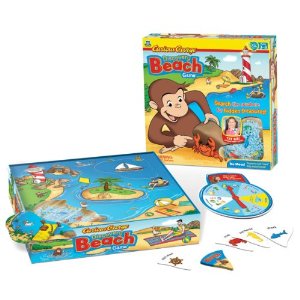 This was the 2nd game Sophie became addicted to. We played it over and over and over and over while she was on Christmas break right after I had Jonah last year. It is a GREAT game for vocabulary, colors, sorting, turn taking, and memory. It is really fun for kids and adults enjoy it too. I love all the Wonder Forge “I can do that!” games because like the name says, kids can really successfully “do” what is needed to play and win the game.
This was the 2nd game Sophie became addicted to. We played it over and over and over and over while she was on Christmas break right after I had Jonah last year. It is a GREAT game for vocabulary, colors, sorting, turn taking, and memory. It is really fun for kids and adults enjoy it too. I love all the Wonder Forge “I can do that!” games because like the name says, kids can really successfully “do” what is needed to play and win the game.
Those are just a few games that have wonderful application when it comes to helping your speech-delayed child. Those are “starter” games, I’ll have another list or two for kids who are further along in the speech therapy process in a future post.
Got a kid with developmental delays? You can see my series on working at home with your child here.
What games do you like to play with your kids??
